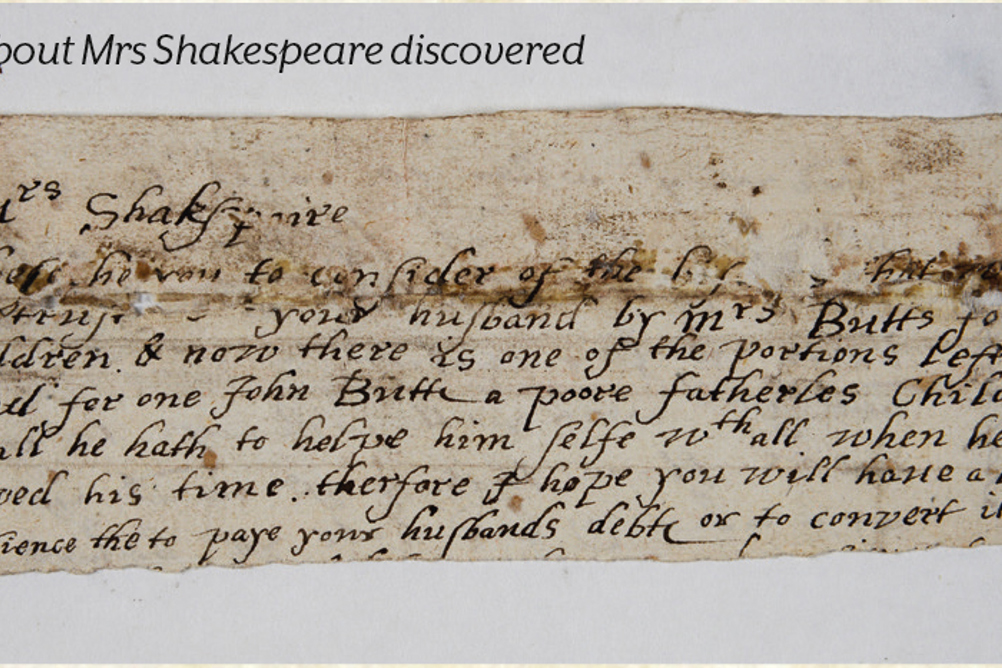Always on the lookout for Shakespearean happenings, Claudine Nightingale shares what she's spotted through her beady bardy binoculars.

An amazing Shakespearean discovery has been made in the archives of Hereford Cathedral. The letter suggests that William Shakespeare's wife might have, in fact, lived with him in London for a period of time, rather than remaining in Stratford, as had previously been assumed.
The letter, addressed to Mrs Shakespeare, talks about the death of a Mr Butts and refers to his son John, ‘a poore fatherless childe’. It asks Mrs Shakespeare to ‘paye your husbands debte’ – a line that also suggests she had independent access to money.
The letter had been used as binding on an early-seventeenth century book at Hereford Cathedral Library. The book was printed by Richard Field, who was originally from Stratford upon Avon and a known associate of Shakespeare's, having been his first printer.
Register now to continue reading
Register to the Drama & Theatre website today and gain access to all the latest news and developments from the world of drama education.
By registering you will receive:
-
Free access to 4 subscriber-only articles per month
-
Unlimited access to news and opinion on our website
Already have an account? Sign in here
